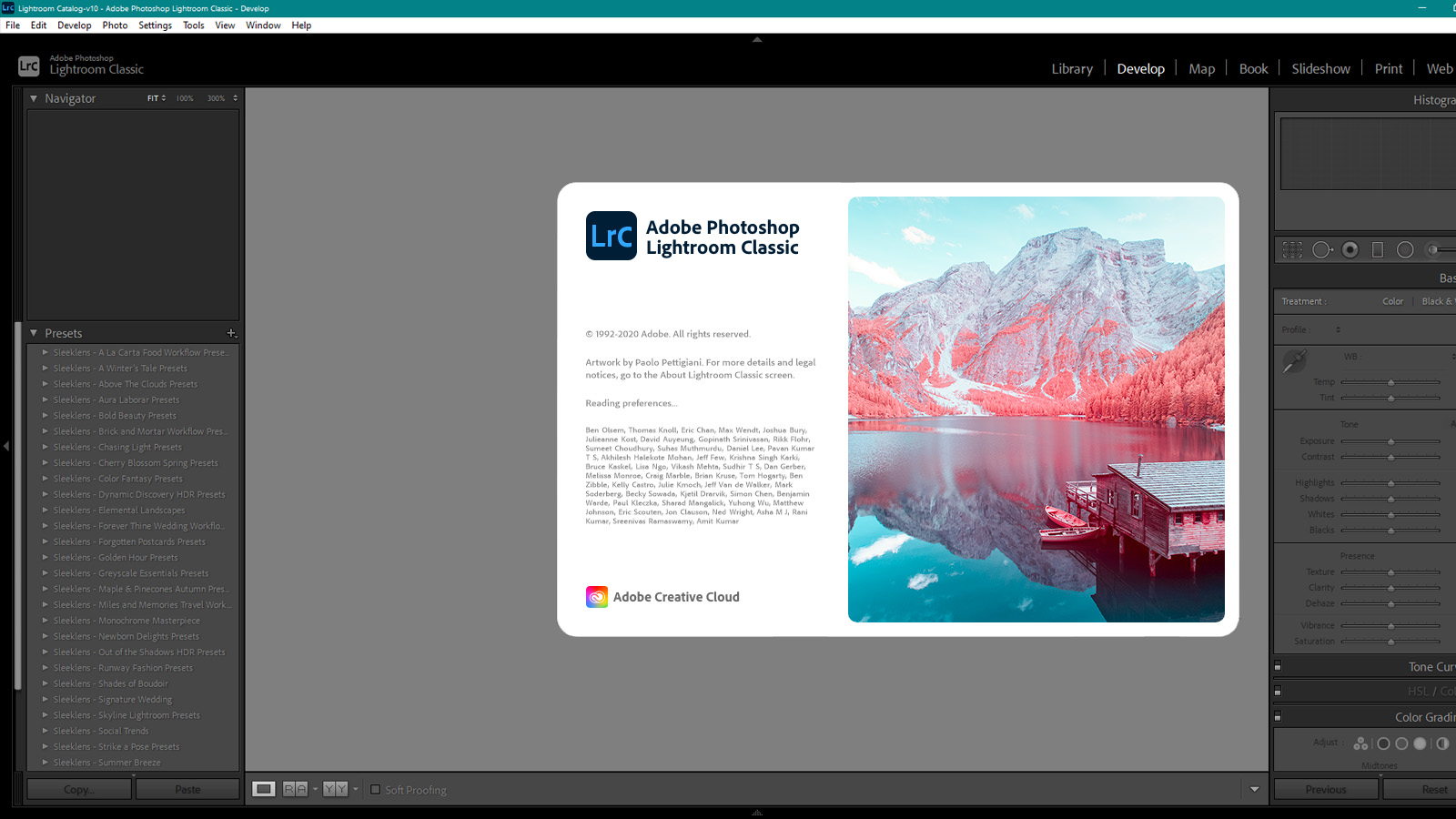

- #Adobe lightroom 6 tutorial skin
- #Adobe lightroom 6 tutorial upgrade
- #Adobe lightroom 6 tutorial professional
Other Develop Module improvements include: The existing Balance slider remains, and it’s now joined by a Blending slider, which controls how much the tones blend into each other. You can play with the Luminance of each tint. Replacing Split Toning, Color Grading brought Hue and Saturation controls for Highlights and Shadows to the Midtones. For example, if you always use the Detail panel last for improved interactive performance, you might want to move that to the end. You can now rearrange the order of the Develop module panels to suit your own workflow.

It’s useful when trying to match photos from different cameras, match a raw file to its in-camera jpeg, match photos that will be displayed together, or replicate the “look” of a different photo. The Reference View is like a Compare view for the Develop module, displaying two photos side by side. Using the Color Range Mask, along with the brush or gradient, gives quick and accurate selections. Local HSL adjustment allows for the Hue to be changed for a selected area. The Color Range Mask selects an area based on sampled colors, and the Luminance Range Mask selects pixels based on their brightness. The Range Masking tools allow you to easily build complex masks for local adjustments, quickly masking detailed areas such as trees, and making localized HSL-type adjustments.
#Adobe lightroom 6 tutorial professional
It’s mostly used by Fuji X-Trans photographers (to remove any “worm” artefacts), pixel peepers and those printing very large prints.Īdobe used its machine learning technology to analyze how skilled professional photographers edited tens of thousands of photos, and then applied this information to build a brand new Auto. It’s much better at retaining highlight and shadow detail, and doesn’t often overexpose, so it’s a much better starting point. The Enhance Details tool is designed to extract additional detail from raw files at the initial demosaic stage of raw processing. Using the Guided Upright tool, you can fix perspective by drawing lines directly on the photo. Some types of profiles can also be faded or exaggerated using an Amount slider, depending on how strong you want the effect. This makes them ideal for film emulation and special effects. For example, a profile can make one shade of blue yellower, another shade of blue more saturated and yet another shade of blue lighter. Profiles can include LUT’s (Look Up Tables) to make much more advanced color adjustments than presets or sliders. Profiles are designed to be selected first, before you start editing, just like choosing a specific film stock for it’s unique “look.” However unlike presets, they act like a separate layer of adjustments, so if you’ve already made some exposure adjustments, these aren’t overwritten. There’s also a whole set of new Adobe profiles for different subjects, and a wide range of creative profiles to give your photos a specific “look”. The camera matching profiles, which were previously hidden in the Camera Calibration panel, attempt to emulate your camera manufacturer’s look. The new Profile Browser is accessed from the top of the Basic panel.
#Adobe lightroom 6 tutorial skin
In the opposite direction, especially when applied with a brush, Texture smoothes skin while retaining the skin’s texture, giving a much more natural result than negative Clarity or Sharpening. It’s particularly good for landscapes, nature photography, and B&W photography. The Texture slider enhances medium size details in a photo, giving a three-dimensional appearance without affecting the overall contrast or increasing noise. For the best result, use Dehaze as a local adjustment. It also works well on backlit photos, underwater photos and reflections. It looks a little like a combination of contrast, clarity, vibrance and blacks, but it runs complex calculations to adapt to the content of the image. The Dehaze slider reduces (or adds) atmospheric haze and fog. Since Lightroom is primarily a photo editing tool, there have been plenty of Develop module improvements, including… What’s new – are the changes worth the upgrade?įor detailed information on the changes, you can read back through the individual release blog posts, but let’s summarize…
#Adobe lightroom 6 tutorial upgrade
Whether you’re considering upgrading from Lightroom 6 (or earlier) to Lightroom Classic because you have a new camera, you’re planning to upgrade to macOS Catalina or Big Sur, or you’re just tempted by the new features, you may wonder what’s changed since Lightroom 6’s release in April 2015.


 0 kommentar(er)
0 kommentar(er)
